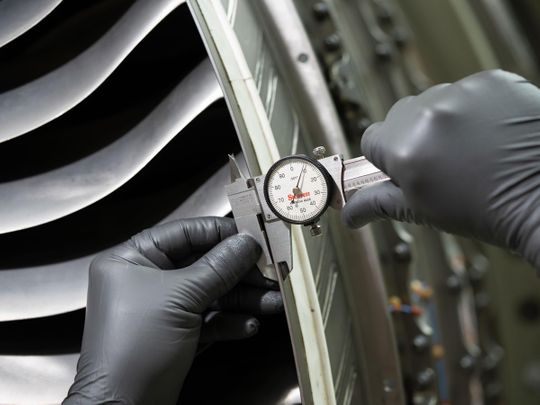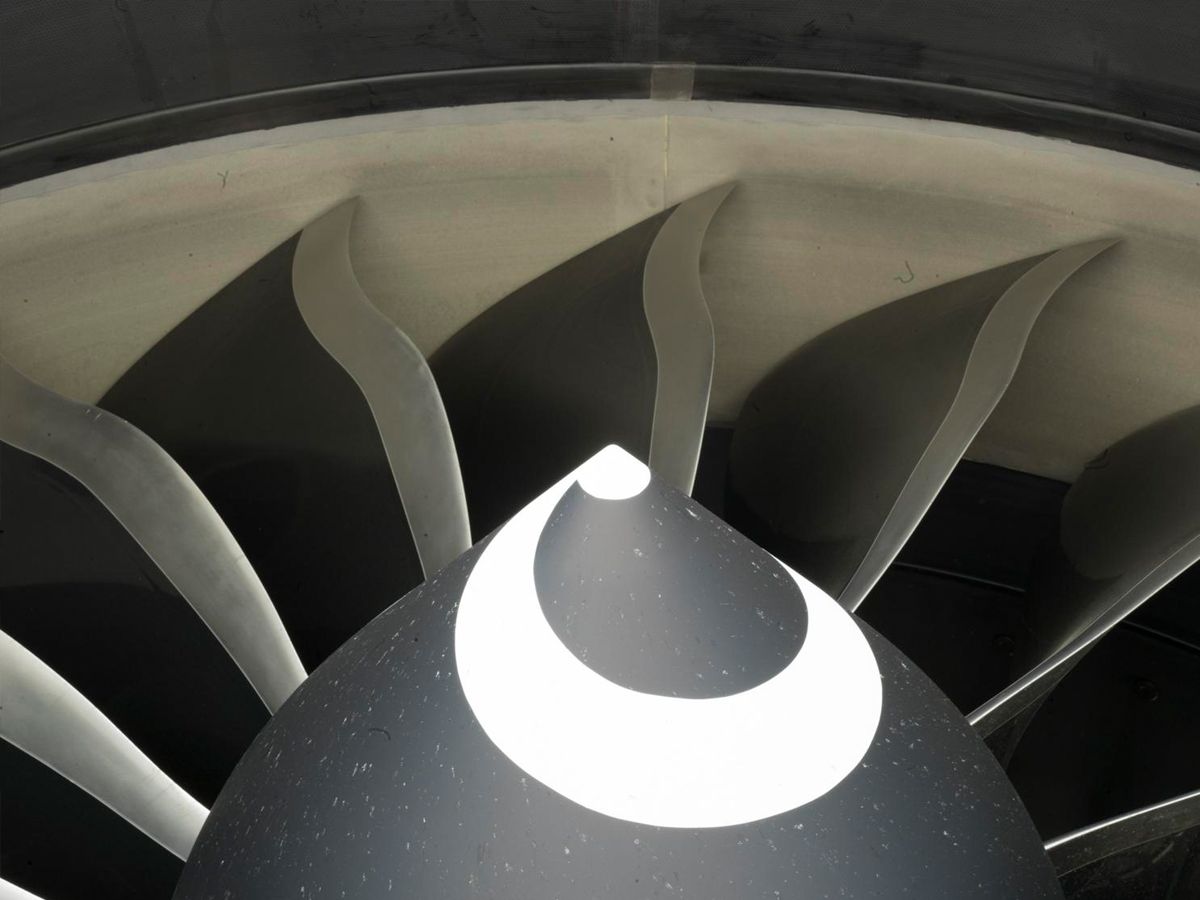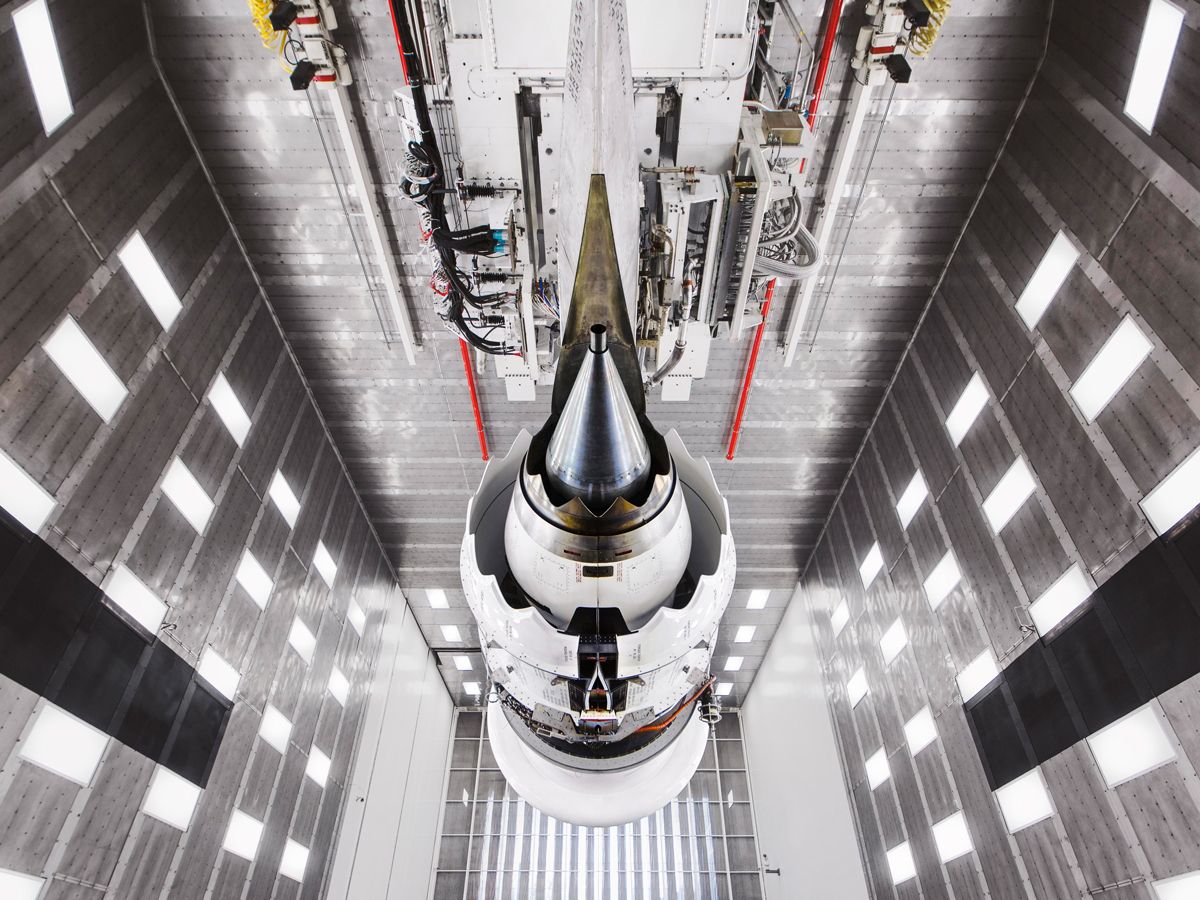
Over the past year, GE Aviation has outlined what is one of the company’s most extensive technology development road maps in its more than 100-year history. Multiple ground and flight tests planned this decade will seek new, breakthrough technologies for use in next-generation commercial aircraft engines that could enter service beginning in the mid 2030s.
Advanced engine architectures such as open fan, hybrid electric propulsion systems, and new compact engine core designs—just some of the technologies that will be demonstrated on test stands over the coming years—will all be key programmes to watch in 2022 and beyond.
In addition to maturing these technologies for flight readiness and new products, GE also supports efforts to increase use and availability of alternative fuels, such as Sustainable Aviation Fuel (SAF) and hydrogen.
Revolutionary technologies and alternative fuels both have critical roles to play in meeting the aviation industry’s long-term climate goal of net-zero carbon emissions by 2050 for commercial flight.
Here’re GE’s top innovations and industry-leading efforts to watch in the march towards net zero.
Open fan and the CFM RISE programme
If you ask GE’s chief engineer Chris Lorence, the time for open fan is now. Why? Since GE first flew an unducted fan in the 1980s, the open fan engine design has been made simpler and lighter with new approaches such as single-stage rotating carbon fibre composite fan blades and stationary outlet guide vanes. He explains more about his views on open fan here.

The open fan design is one of the advanced engine architectures CFM International, a 50-50 joint company between GE and Safran Aircraft Engines, is exploring through the CFM RISE Programme. The parent companies came together in June last year to launch the RISE Programme with a target of more than 20 per cent better fuel consumption and lower CO2 emissions compared to today’s most efficient engines. Technologies matured as part of the RISE Programme will serve as the foundation for the next-generation CFM engine that could be available by the mid 2030s. Central to the programme is state-of-the-art propulsive efficiency.
Hybrid electric – it’s in GE’s DNA
Even before Nasa announced in September 2021 the selection of GE for its Electrified Powertrain Flight Demonstration (EPFD) programme, GE had been advancing electrification of aircraft and engine systems for more than a decade. During that time, GE engineers matured individual components of a hybrid electric system, including motors, generators and power converters.
Now, the jet engine maker and aircraft systems company will take what it’s learned in laboratories about making an integrated electric machine and ready it for ground and flight tests planned for the mid 2020s.
Through the total $260 million programme with Nasa, GE will mature a megawatt class hybrid electric powertrain to demonstrate flight readiness for single-aisle aircraft using a modified Saab 340B test bed and GE’s CT7-9B turboprop engines. GE is partnering with Boeing, which will support the programme’s flight tests and has selected BAE Systems to design, test and supply energy management components.
Electrification efforts draw on capability from across GE’s aviation, power and research organisations. GE’s co-founder Thomas Edison created the first electrical grid in 1882 and today, GE’s power equipment generates one-third of the world’s electricity
Smaller core, greater efficiency
One of the enabling technologies being studied in CFM’s RISE Programme is a compact engine core. In another multimillion-dollar programme with Nasa announced in late 2021, GE was awarded contracts to test and mature new jet engine core designs, including compressor, combustor and high-pressure turbine technologies to improve thermal efficiency. Continued development of Ceramic Matrix Composites, an advanced, heat-resistant material, is also a key part of the effort to improve fuel efficiency and thereby reduce emissions. GE expects this effort to lead to a ground test later this decade.

Powering another first for Sustainable Aviation Fuel (SAF)
On December 1, United Airlines operated the first passenger flight using 100 per cent SAF in one of the two CFM LEAP-1B engines. But the more than 100 people on board from Chicago to Washington, D.C., weren’t the only unique thing about the flight. As Gurhan Andac, GE’s engineering leader for fuels explains, the historic flight was also important for efforts to increase SAF above the current blending limit of 50 per cent.
Currently, SAF approved for use is a blend of petroleum-based Jet A or Jet A-1 fuel and a SAF component with a maximum blend limit of 50 per cent. Andac chairs an international task force to develop standardised industry specifications supporting adoption of 100 per cent drop-in SAF, which does not require blending with conventional jet fuel.
“There have been other 100 per cent SAF flights in the past, including with GE and CFM engines, but in this flight, we were able to blend two different SAF types together to get to a drop-in fuel that is fleetwide and infrastructure compatible at 100 per cent,” Andac says. “What we learned from this flight is that we can actually blend two distinct SAF types together to get to a fully drop-in sustainable synthetic Jet A as a replacement for conventional Jet A.”
Drop-in means that no engine or infrastructure changes are needed to use the fuel, and the drop-in SAF can be used in aviation equipment today.
GE already has plans for more test flights with 100 per cent SAF this year and beyond, including programmes announced at the most recent Dubai Airshow with Emirates and Etihad Airways. Most recently this year, GE completed successful ground testing of its Passport long-range business aviation engine using 100 per cent SAF. The Passport engine can operate on approved SAF today, and the recent testing shows the capability of the engine to run on 100 per cent SAF.
In fact, today and in the future, all GE and CFM International engines can operate with approved SAF, which is produced from alternative feedstocks and processes, lowering life cycle carbon emissions compared to petroleum-based fuels.
Pioneering hydrogen combustion
The announcement made in February this year that CFM and Airbus are collaborating on a hydrogen demonstration programme will be informed in part by GE’s experience with hydrogen fuels in land-based gas power turbines. GE has more than eight million operating hours of experience with hydrogen fuel blends, including with aeroderivative engines.
With plans to flight test a hydrogen combustion engine around the middle of this decade, CFM’s RISE and Airbus’ ZEROe programmes come together. The objective is to ground and flight test a direct combustion engine fuelled by hydrogen, in preparation for entry-into-service of a zero-emission aircraft by 2035.
CFM will modify the combustor, fuel system, and control system of a GE Passport turbofan to run on hydrogen. The engine was selected because of its physical size, advanced turbo machinery, and fuel flow capability. It will be mounted along the rear fuselage of the flying test bed to allow engine emissions, including contrails, to be monitored separately from those of the engines powering the aircraft. CFM will execute an extensive ground test programme ahead of the A380 flight test.
“We will fly a modified engine to learn the art of the possible and to prove out the technologies,” says Mohamed Ali, Vice President and General Manager of Engineering for GE Aviation. “Is hydrogen harder? Yes. Is it doable? Absolutely. And we are building on tremendous experience, and I am actually very encouraged by the inventions we have already made to address those challenges.”




